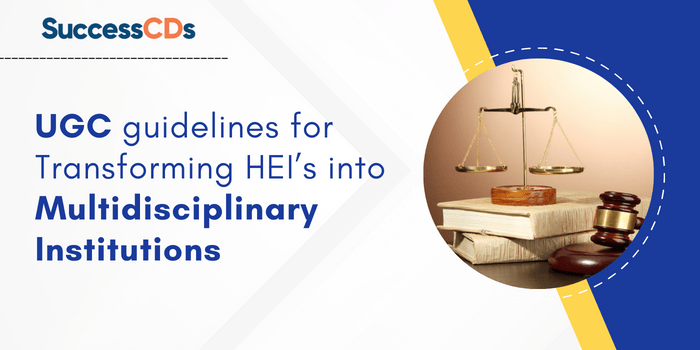
Guidelines for Transforming Higher Education Institutions into Multidisciplinary Institutes
The University Grants Commission (UGC) is all set to release the finalised guidelines to transform single-stream institutions into large multidisciplinary universities and autonomous degree-awarding educational institutions as mandated in the National Education Policy (NEP) 2020.
The draft guidelines for Transforming Higher Education Institutions (HEIs) into Multidisciplinary Institutions were made public for comment and suggestions in March this year.
India currently has various stand-alone and domain-specific institutions and universities. The move pertinent for the higher educational system to phase out stand-alone, fragmented and domain-specific HEIs and replace them with multidisciplinary institutes.
The guidelines further recommend opening departments for languages, literature, music, philosophy, Indology, art, dance, theatre, education, mathematics, statistics, and more to achieve a multidisciplinary character.
The new guidelines also intend to bring affiliated colleges on to the “track of progressive autonomy” leading to a degree-awarding institution and finally into a university as mandated in National Education Policy (NEP 2020). Currently, colleges are connected with universities through an “affiliating system” where universities design the syllabi, conduct examinations and award degrees, while teaching is done in colleges.
As per the guidelines, by 2035, all affiliated colleges should become degree-awarding multidisciplinary autonomous institutions.”
According to the National Education Policy (NEP) 2020, all HEIs should aim to become interdisciplinary by 2040, with thousands of students enrolled. In order to ensure equity and inclusion, more HEIs will be developed in underserved areas, and by 2030, there should be one large multidisciplinary HEI in or close to every district. This goal can be reached by developing new institutions in addition to consolidating, growing, and improving existing HEIs.